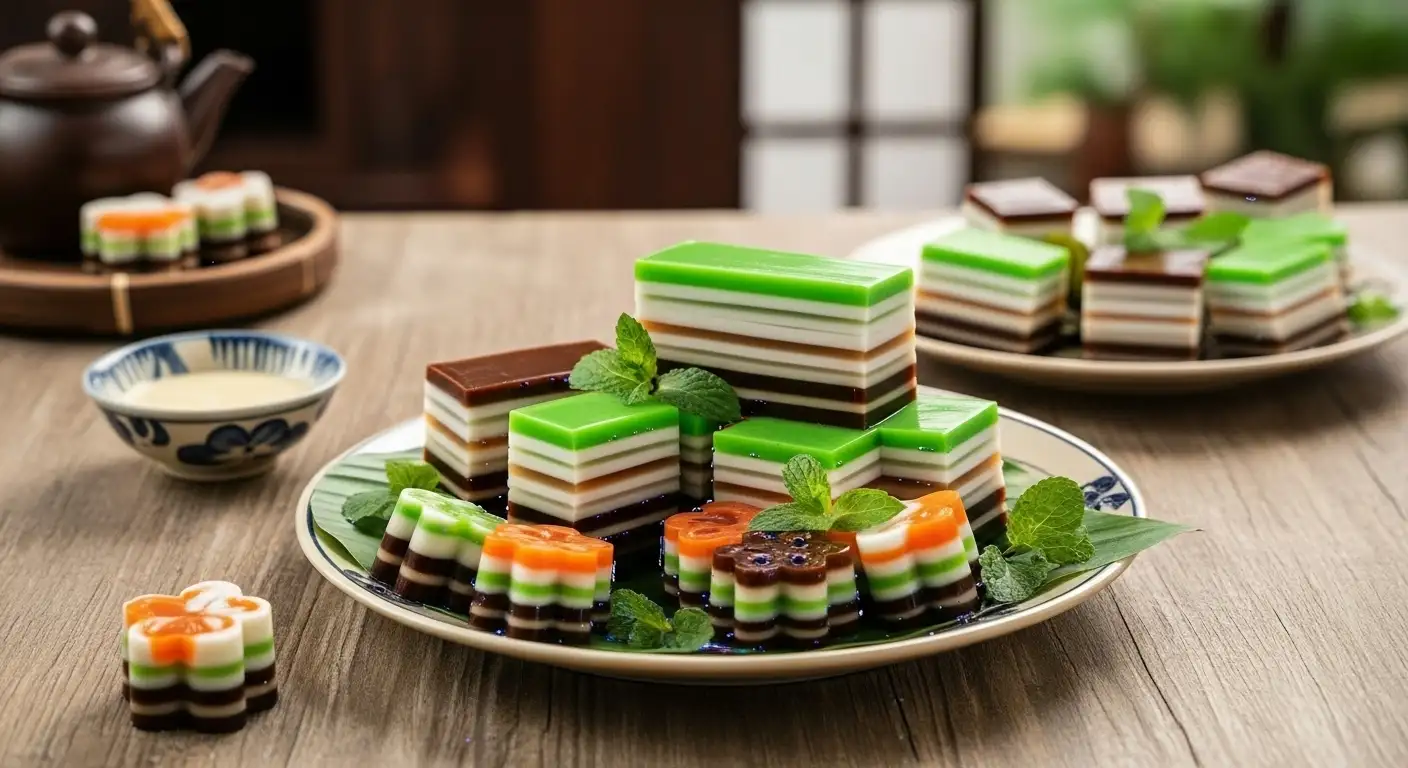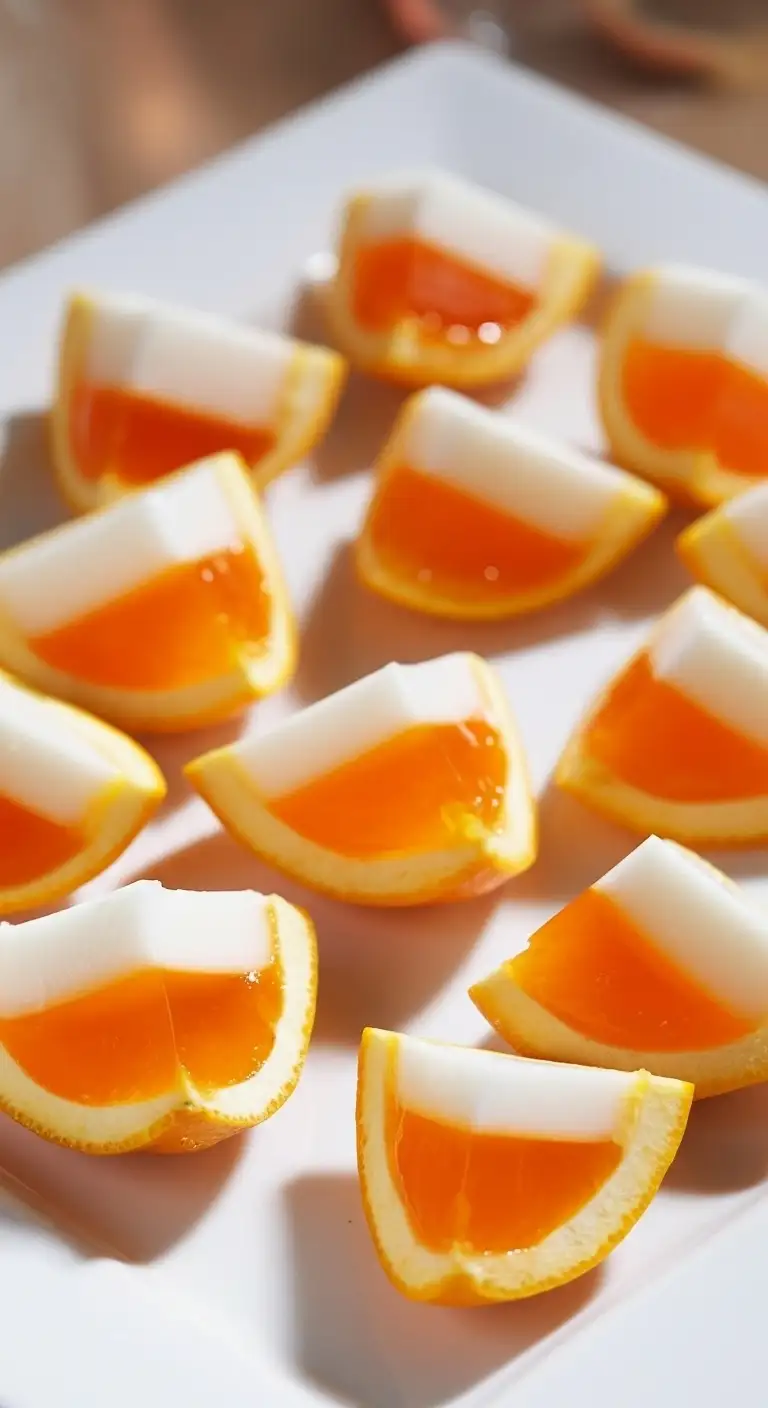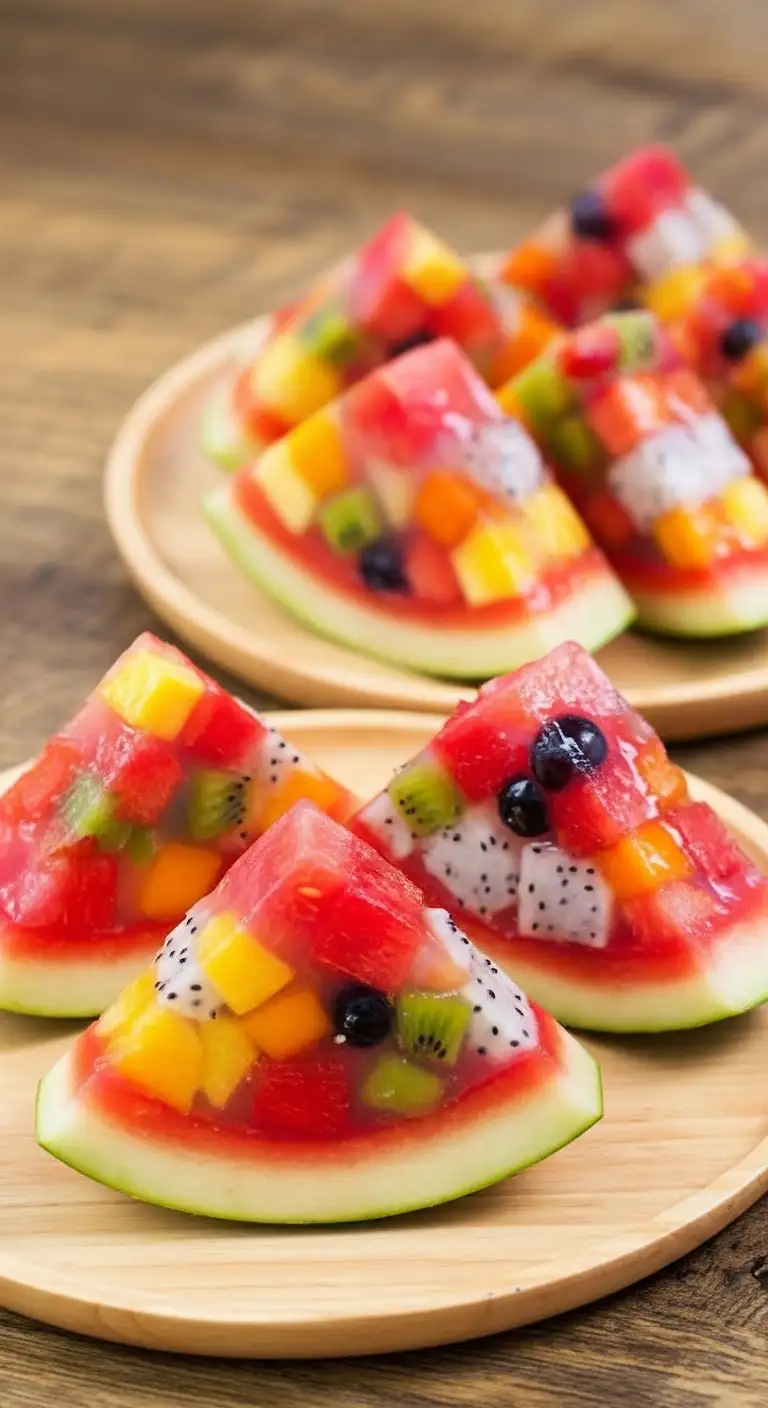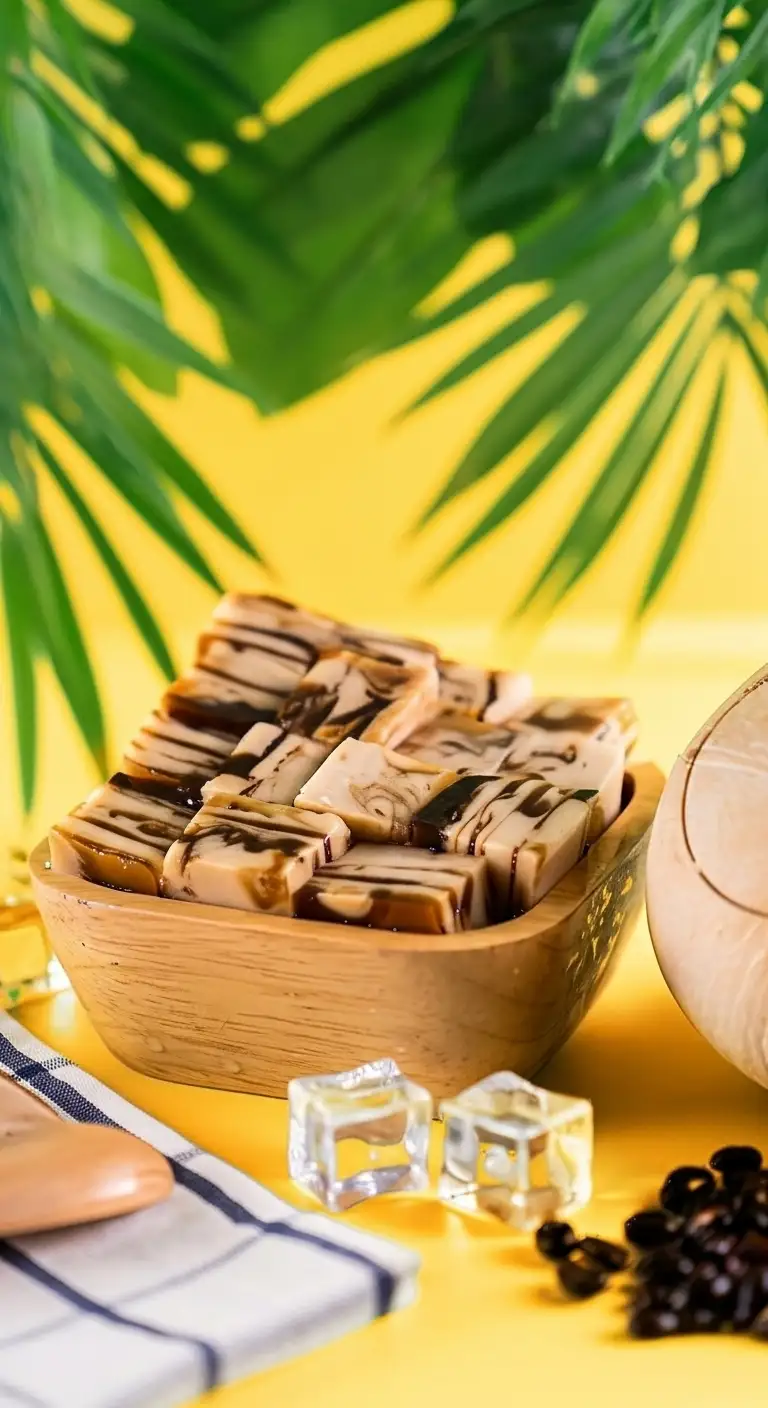Rau Câu (pronounced rao cau) is the Vietnamese term for jelly or gelatin dessert, and specifically refers to a firm, refreshing confection made with agar-agar. Unlike Western gelatin, which is derived from animal collagen, rau câu utilizes agar, a vegan gelling agent extracted from seaweed. This makes it a universally popular, light, and endlessly customizable treat, perfect for cooling off in Vietnam’s tropical climate.
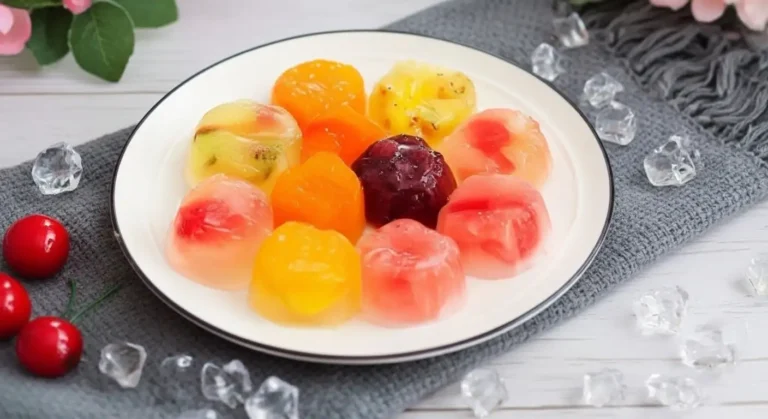
The Basics of Rau Câu (Vietnamese Jelly)
What is it?
Rau Câu is a sweet, chilled Vietnamese dessert with a firm, slightly brittle, and refreshing texture. The name Rau Câu literally means “seaweed” or “sea algae” (the source of the agar), while the finished dessert is often called Thạch Rau Câu (thạch meaning jelly/jello).
Key Ingredient: Agar-Agar
The defining characteristic is the use of agar-agar powder, which gives the jelly a unique texture that is firmer and less wobbly than animal gelatin. It is chewy but breaks cleanly, and it does not melt easily at room temperature, making it ideal for the tropics.
Flavor Profile:
The base is lightly sweetened, but the flavor comes from the liquid used to dissolve the agar. The most classic flavor is coconut, made with coconut water and a creamy layer of coconut milk. Other popular bases include pandan, coffee, fruit juices, and even condensed milk.
Vegan and Vegetarian-Friendly:
Due to the use of seaweed-based agar, Rau Câu is naturally vegan and vegetarian-friendly, serving as a staple chilled dessert across Vietnam and Vietnamese communities worldwide.
The Diverse Types and Flavors of Rau Câu
The world of Rau Câu is rich with variations, ranging from simple blocks of color to elaborate layered cakes.
Rau Câu Dừa (Coconut Jelly):
The most classic and popular type. It is typically a two-layered jelly: a clear or translucent bottom layer made with sweetened coconut water, and a creamy, opaque top layer made with rich coconut milk. Often set inside a hollowed-out young coconut (dừa) for a stunning presentation.
Layered and Flavored Jellies (Rau Câu Nhiều Tầng):
Rau Câu is famous for its visual appeal, achieved by pouring thin layers of different flavored and colored liquids on top of each other, allowing each one to partially set before adding the next. Common layers include:
Pandan (Lá Dứa): Bright green, fragrant, and slightly chewy.
Coffee (Cà Phê): Deep brown, often made with Vietnamese coffee and condensed milk.
Flan (Bánh Flan): A popular fusion where the custard flan is suspended between layers of jelly, creating a rich texture contrast (Thạch Rau Câu Flan).
Fruit Jellies: Made with pureed or chopped tropical fruits like jackfruit, lychee, mango, or passion fruit.
Textural Variations:
Rau Câu Giòn (Crispy Jelly): The traditional, firmer texture from pure agar-agar.
Rau Câu Dẻo (Chewy Jelly): A softer, more elastic, and chewier jelly often created by blending agar with other plant-based gelling agents like konjac powder.
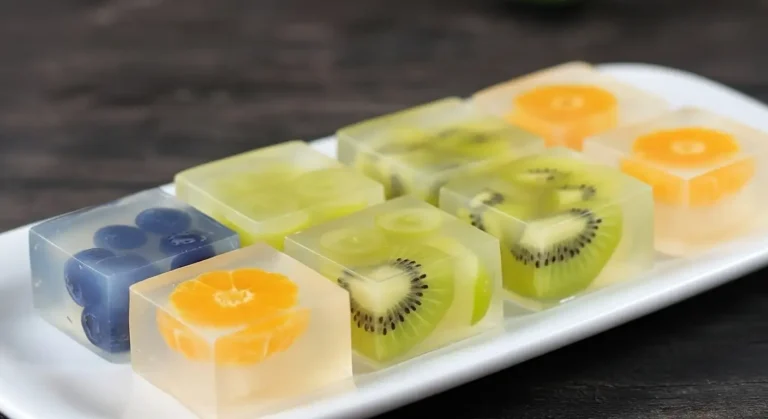
How to Enjoy Rau Câu
Chilled is Essential: Rau Câu is always served cold and is the ultimate cooling dessert on a hot day. The texture and refreshment are best when thoroughly chilled in the refrigerator.
As a Standalone Dessert: The layered, cake-like varieties are often cut into decorative cubes, diamonds, or shapes and eaten with a toothpick or small dessert fork.
As an Ingredient (Topping): Small cubes or strips of plain or flavored Rau Câu are a common, refreshing ingredient in a variety of Vietnamese sweet soups (Chè), such as Chè Thập Cẩm (Mixed Sweet Soup) or Chè Thái (Thai Sweet Soup). In this form, they are eaten with a spoon along with the other ingredients, ice, and liquid broth.
With Extras: For a richer treat, it can be served over crushed ice, sometimes topped with a drizzle of sweetened condensed milk, or alongside fresh fruit and nuts.
Regional Differences: North, Central, and South
Rau Câu itself is quite standardized due to the use of agar-agar, but its prevalence and the flavors used vary, reflecting the regional differences in ingredients and climate.
| Region | Climate & Culinary Trait | Rau Câu Style & Popularity |
|---|---|---|
| The South | Tropical & Sweet. Abundance of coconut, tropical fruits, and a preference for bold, sweet flavors. | Extremely Popular. Rau Câu Dừa (Coconut Jelly) is a regional staple. The tropical climate makes cold jellies an everyday favorite. Desserts are typically richer and sweeter, often incorporating pandan and creamy coconut milk. |
| The Central | Subtle & Imperial. Famous for sophisticated Chè (sweet soups) and regional specialties (Hue). | Common, but often an accompaniment. While found everywhere, Central cuisine often favors individual Chè items like Chè Hạt Sen (Lotus Seed Sweet Soup). Rau Câu is frequently cubed and used as a refreshing element in mixed Chè. |
| The North | Temperate & Traditional. Dishes are generally more subtle, less sweet, and use less coconut milk compared to the South. | Grass Jelly is more Traditional. While agar-based Rau Câu is available, the North has a stronger historical tradition with other plant-based jellies, namely Grass Jelly (Sương Sáo) and a jelly from the Tiliacora triandra plant (Sương Sâm). These are often served in Chè during the summer, reflecting local ingredients and taste preferences. |
